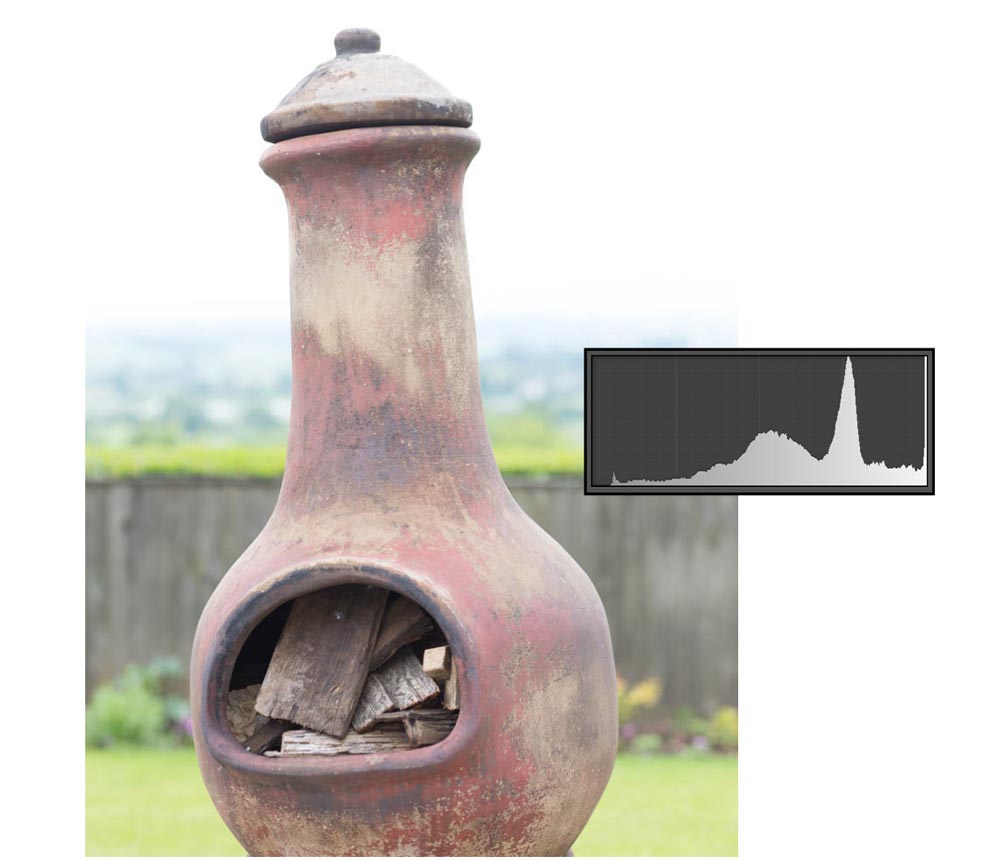The dynamic range of a camera (or printer, or monitor) is the ratio between the minimum and maximum light intensities observed. For digital cameras, it is the range outside which the camera records only pure white or pure black without any detail. This commonly occurs when you have a bright sun overhead with a dark foreground. Moreover, it is a problem for all cameras regardless of price.
As can be seen in the image above, all detail in the sky has been lost—the recorded pixels are just pure white and cannot be recovered in post-editing (you cannot even tell where the photograph ends and the white background of this webpage begins…). A quick glance at the histogram confirms this: the sharp spike to the far right-hand side of the chart shows that there are a number of pixels (in this case, probably 30%) that that have a tonal value as pure white.
Dynamic range is measured by Exposure Value (EV), which we can think of as stops on a camera. Most digital cameras these days have a practical dynamic range of 6-9 stops. In other words, if the dynamic range of your scene has a value greater than this then you will lose some detail (irrecoverable using post-editing software). In practice this means that your exposure settings should be such that the minimum and maximum light intensities do not lie more than 3-4 stops either side of your subject exposure. If this is not achievable, then you need you will need to think of alternatives: re-compose, use a graduated ND filter, or blend multiple exposures using high dynamic range (HDR) techniques.
In the case of the above image, you could try at first to lower the exposure of the scene because to the left-hand side of the histogram indicates that lowering the EV of the scene to a certain degree would not result in the the darker area of the images turning to pure black. It’s important to put the scene in context, as well. Do we really care if the darkest areas of the image (inside the chiminea) turn to pure black? Not really. Once we realise this then we can drop down the exposure to try and save the detail in the sky and then perhaps use post-editing techniques (masking) to adjust exposures in different areas of the scene.
